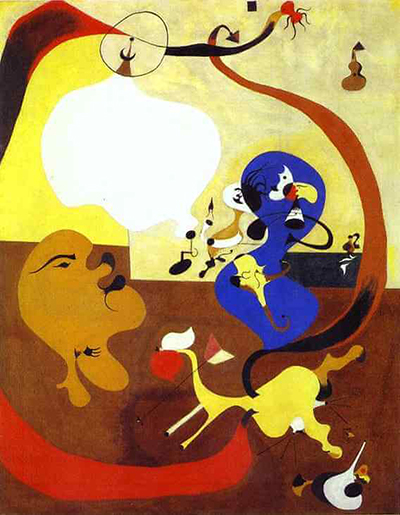There were a number of items titled Dutch Interior by Joan Miro, but thankfully they have been numbered individually so that we can identify them more easily.
This was the second in the series and was finished in 1928. The original painting can now be found at the Guggenheim. Intérieur hollandais, to give it it's original title, was most likely inspired by the artist's studies of Dutch art from previous centuries. He travelled to this region several times and is known to have been an admirer specifically of the Dutch Golden Age. Dutch Interior I was also produced from a similar series of interests. Miro is known to have purchased a number of postcards during his trip to the Netherlands, with each one holding an artwork from Dutch art. As someone who worked in abstract forms during this time, he would not have needed huge detail within these reproductions in order to make use of them.
The general concensus is that from his collection of postcards, it would be the one with Jan Steen's The Dancing Lesson which provided the inspiration for Dutch Interior II. The Guggenheim also owns several study drawings produced prior to commencing this work and they reveal the processes taken by the artist to plan and amend the composition at its earliest stages. He practiced certain elements before putting them together in a more comprehensive drawing, then moving onto oils to produce what we find here. Those unfamiliar with the abstract and surrealist world may sometimes assume a lack of planning on the part of its artists, but that could actually not be further from the truth.
Whilst converting the original Steen piece into abstract form, Miro also tweaks the overall balance of the artwork as well. The Spaniard increases the importance of the figures within this artwork and reduces the impact of the supporting items found in the room. He achieves this change through adjustments of size, position and also colour. The effectiveness of this is underlined by how we all first lay eyes on the animals and human figures, before then gazing at the smaller items which are placed around them.s




